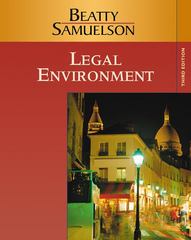Final_PPD503_Fall2020_Prompts(1).pdf - Adobe Acrobat Reader DC X File Edit View Sign Window Help Home Tools Final_PPD503_Fall20... x (? Sign In 3 / 5 + 154% 6. [20 points total] A city has three equally sized groups of people: avid hikers, casual hikers, and non- hikers. Each group's marginal benefit of hiking trails, measured in dollars per mile of trail, is given by MBAvid = 1000 - 20Q, MB Casual = 400 - 80, MBNon = 0, where Q is the miles of trails in the city's parks. Hiking trails are an example of a pure public good that is both nonrival and nonexcludable. Each mile of trail costs $630 to construct (i.e., MC = 630). a. [2 points] How many miles of trail will the avid hikers pay for if they pay the entire marginal cost of $630 and only consider their own benefit? b. [4 points] The casual hikers have no private incentive to pay $630 for additional miles, especially since they can free ride off the avid hikers' expenditures. In contrast to that inefficient equilibrium, to how many miles of hiking trails are economically efficient? c. [4 points] In a single diagram, with quantity on the x-axis and price on the y-axis, show your answers from parts a and b. Also, show the deadweight loss associated with the inefficient outcome from part a. /Be sure to label all curves in the graph. Your graph need not be drawn to scale, but W 6:07 PM 11/20/2020 LFinal_PPD503_Fall2020_Prompts(1).pdf - Adobe Acrobat Reader DC X File Edit View Sign Window Help Home Tools Final_PPD503_Fall20... x ? Sign In cpo 3 /5 154% a. [ pommes ] How many miles of trall will the avid makers pay for TI they pay the entire marginal cost OF $630 and only consider their own benefit? b. [4 points] The casual hikers have no private incentive to pay $630 for additional miles, especially since they can free ride off the avid hikers' expenditures. In contrast to that inefficient equilibrium, how many miles of hiking trails are economically efficient? c. [4 points] In a single diagram, with quantity on the x-axis and price on the y-axis, show your answers from parts a and b. Also, show the deadweight loss associated with the inefficient outcome from part a. [Be sure to label all curves in the graph. Your graph need not be drawn to scale, but your answers to parts a and b, along with the deadweight loss, must be evident.] d. [2 points] How big is the deadweight loss associated with the inefficient outcome from part a? e. [4 points] As mayor, you propose that the city build the efficient mileage that you determined in part b, and each group (the avid hikers, casual hikers, and non-hikers) would pay for one-third of the total cost. Would this represent a Pareto improvement? Would this represent a Kaldor-Hicks improvement? Explain both answers. f. [4 points] In an effort to garner more public support, you decide to put the hiking trail issue to a to direct, majority-rule vote. The median voter is in the casual hiker group, so you would expect the casual group's preferences to prevail in the election. How many miles does the casual group prefer if they have to pay for one-third of each mile's cost? (Note: 1/3d of $630 is $210.) How big is the deadweight loss associated with this voting outcome? W 6:07 PM 11/20/2020 L








